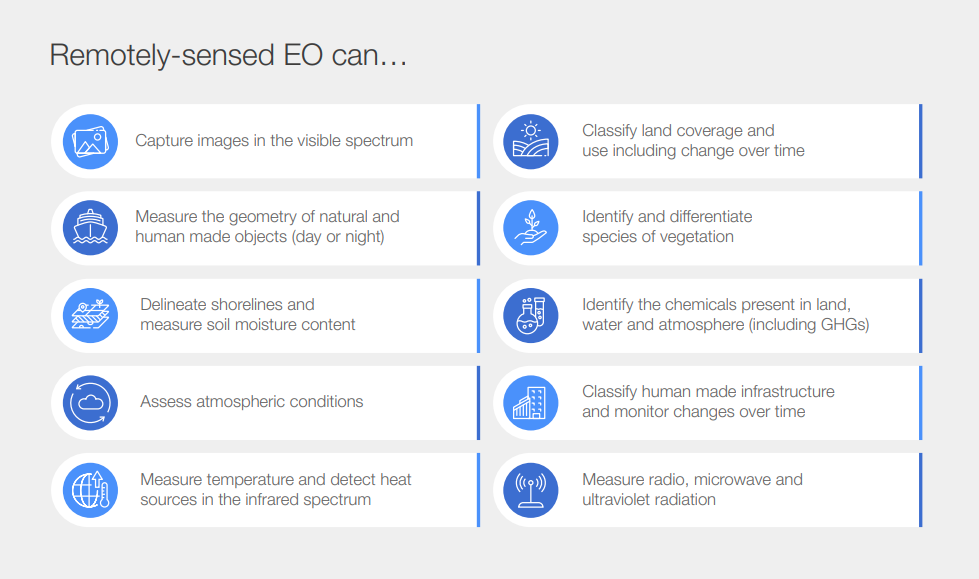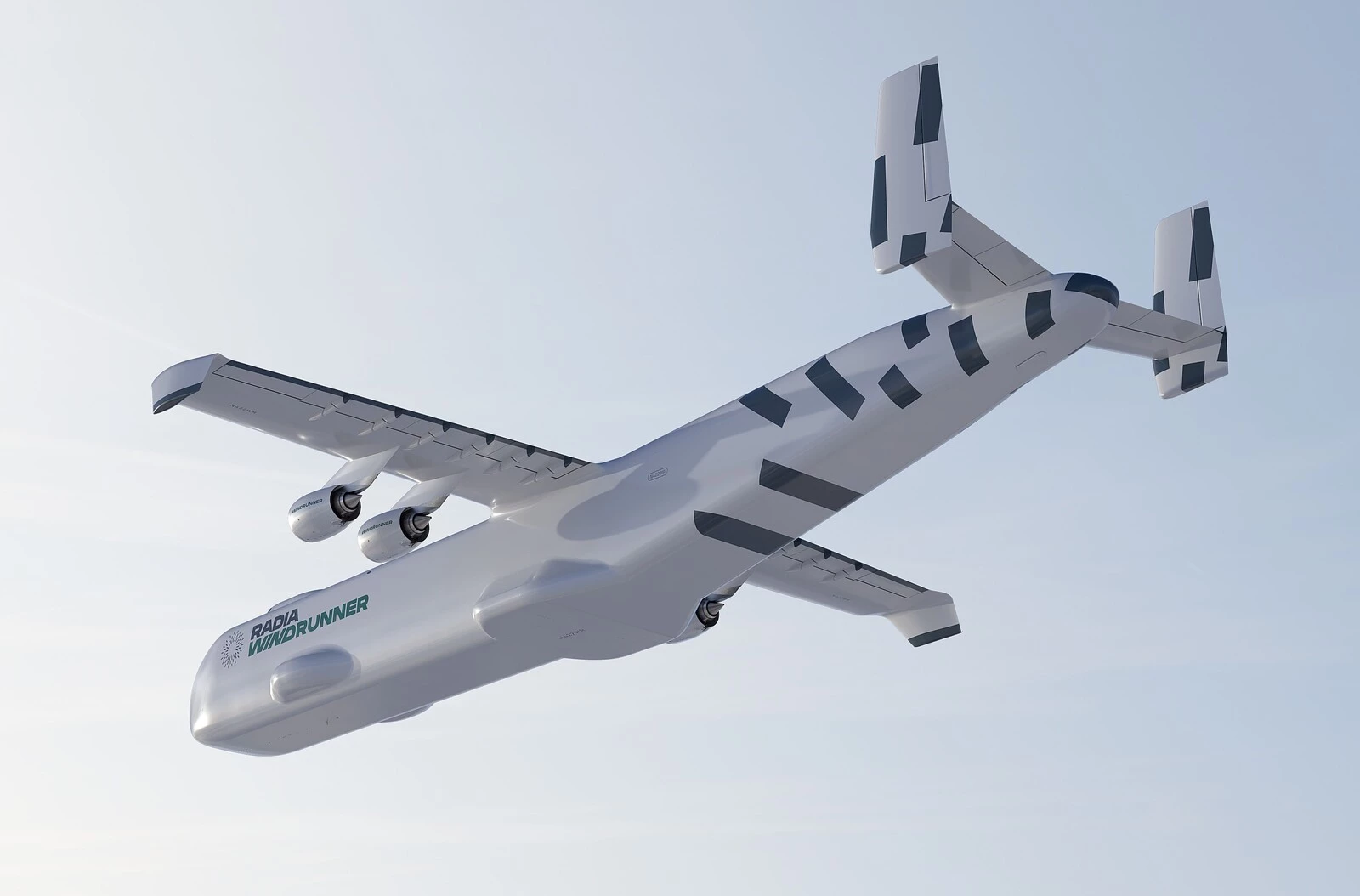3 innovative ways technology helping to fight climate change
 Amazing ways to use technology to solve the climate crisis (photo: Getty Images)
Amazing ways to use technology to solve the climate crisis (photo: Getty Images)
Modern technologies play a key role in the fight against climate change by offering innovative solutions to reduce emissions and protect the environment. Many of these developments are aimed at improving resource and energy efficiency and reducing air pollution.
RBC-Ukraine reports on three innovative ways to help fight climate change regarding the World Economic Forum website.
Earth observation for environmental protection
Earth observation (EO) involves the collection of information about the Earth's surface, waters, and atmosphere using remote sensing platforms - on the ground, in the air, and via satellite. The data is analyzed to monitor and assess both the natural and human-made environment for a variety of applications and industries.
According to a recent report by the World Economic Forum, it could generate $3.8 trillion in economic benefits by 2030, while positively impacting the climate and nature.
Enhancing the Global Value of Earth Observation estimates that EO can inform interventions that reduce greenhouse gas emissions by more than 2 gigatons annually.
“No one will argue it's important we protect the integrity and health of Earth – because that is our home. For us to properly care for it, we need to understand it, and for us to understand it, we need to monitor it,” says Yana Gevorgyan, director of the secretariat of the Group on Earth Observations, an intergovernmental body that develops common solutions for collecting Earth data.
Earth observation data is vast. It is collected from a variety of technologies and systems.
To this end, Gevorgyan has assembled a global scientific supergroup of data experts, scientists, and ecologists to create the first of its kind, a single open online resource that combines high-quality ecosystem maps from around the world.
'Atlas', which will be rolled out for the first time in California, aims to map global ecosystems in unprecedented yet accessible detail, enabling governments and individuals to take action to preserve nature.
“Over half of the world's ecosystems today are not mapped. We don't even know where they are. We don't know how to categorize and classify them, and we don't really know enough about their condition and how they're changing,” explains Gevorgyan.
The initiative thus aims to fill this knowledge gap and map all of the world's ecosystems by harmonizing the approach to mapping and locating them, and then tracking changes over time.
 Earth observation using remote sensing technology is used to map the planet's ecosystems (photo: The World Economic Forum)
Earth observation using remote sensing technology is used to map the planet's ecosystems (photo: The World Economic Forum)
Artificial intelligence for decarbonization
Artificial intelligence (AI) is a game changer in many areas of research, including in scientific disciplines where experts believe its use can accelerate the revolution.
Insilico Medicine is another organization that uses the potential of this technology for good. The biotech company's Pharma.AI platform facilitates the development of new drugs in biology, chemistry, and clinical trials.
As part of its Generative AI for Sustainability concept, Insilico's platform is also being used to develop more environmentally friendly chemicals, fuels, and materials in partnership with several companies.
“So, now we can create highly specific chemicals that capture carbon efficiently and then release it in a reusable form. So you don't necessarily need to go and store it somewhere,” explains Zhavoronkov, a scientist and founder of the company.
Currently, the team is focused on organometallic frameworks and amines, as well as several other very promising technologies that allow combining certain molecules to create efficient filters that can capture CO2 and then release it in a recyclable form.
Zhavoronkov emphasizes the significant demand for this gas in bio-production and other areas.
“A lot of CO2 is purchased for use by biological, biomedical manufacturing. And instead of getting this gas, spending a lot of money on producing it, you can actually capture it from the atmosphere,” the scientist says.
This work, he adds, can help meet the need and at the same time contribute to the creation of environmentally friendly products.
The company believes that within the next five years, it should have materials that will allow for effective decarbonization. If they can also find a way to reuse CO2 for industrial purposes, such as growing artificial meat and artificial food in the laboratory, they will be able to not only decarbonize but also feed the planet.
Aviation for green energy
Wind turbines are becoming an increasingly common sight both on land and at sea and are highly efficient means of generating electricity. According to IRENA, installed wind capacity worldwide increased 98-fold between 1997 and 2018, from 7.5 GW to 733 GW.
While these sustainable energy devices seem large enough, their size, which is determined by road and rail transportation constraints, is a limiting factor to their potential efficiency on land.
“The only thing that's standing between us and GigaWind, offshore-sized turbines, onshore, is having a transportation issue solved,” says Mark Lundstrom, CEO of Radia, a Colorado-based energy startup.
“Today, the turbines are simply too big to get under bridges, through tunnels, around curves. And that's why blades are typically limited in the 70m range or so, onshore, whereas offshore they're well over 100m in length – Eiffel Tower-sized machines,” he says.
Lundstrom believes that the world's largest airplane should be created to deliver giant wind turbine blades anywhere. Designed to meet aerospace industry standards, the WindRunner has a volume 12 times larger than a Boeing 747 and can land on a shorter runway than any commercial aircraft.
The company claims that with a conservative fleet of wind turbines, the WindRunner GigaWind could add up to 216 GW to the U.S. grid and provide up to 40 percent of all US electricity generation by 2050.
“This will enable the doubling of the capacity of a wind turbine. Also, it allows you to triple the acreage in the world where wind is economically viable. And so there's a giant universe of new sites that can be opened up that are not currently available for wind energy,” explains Lundstrom.
Radia plans to build a fleet that will eventually operate from geographic centers around the world, delivering parts directly to any location within a 2000 km radius.
 The WindRunner, currently under development, is the world's largest aircraft designed to increase the capacity of wind turbines around the world (photo: Radia)
The WindRunner, currently under development, is the world's largest aircraft designed to increase the capacity of wind turbines around the world (photo: Radia)
Read also how artificial intelligence will help farmers get more crops at lower costs.

